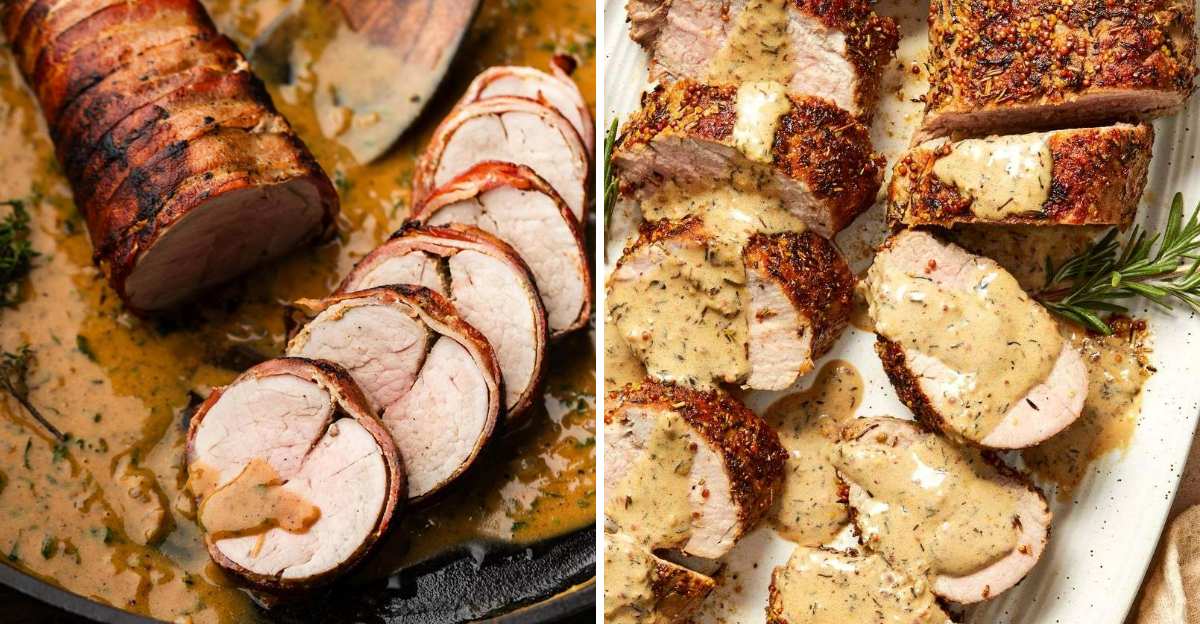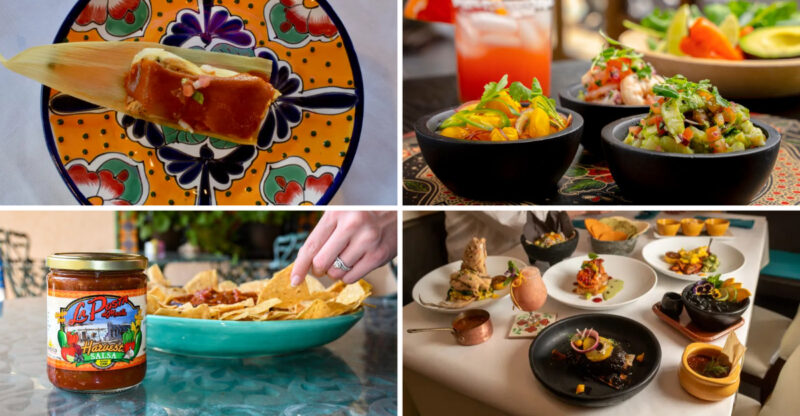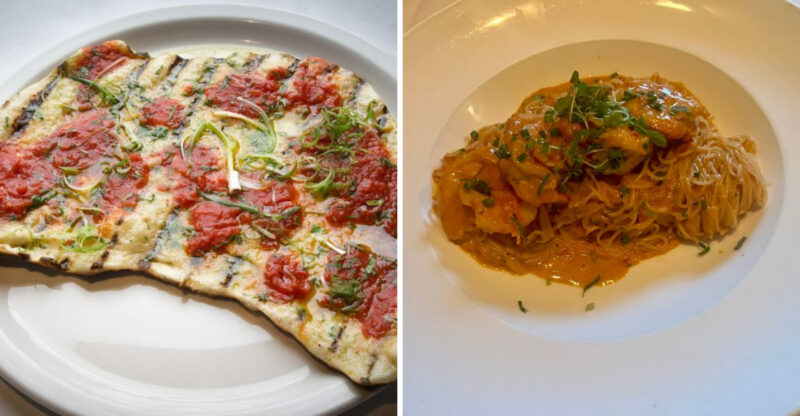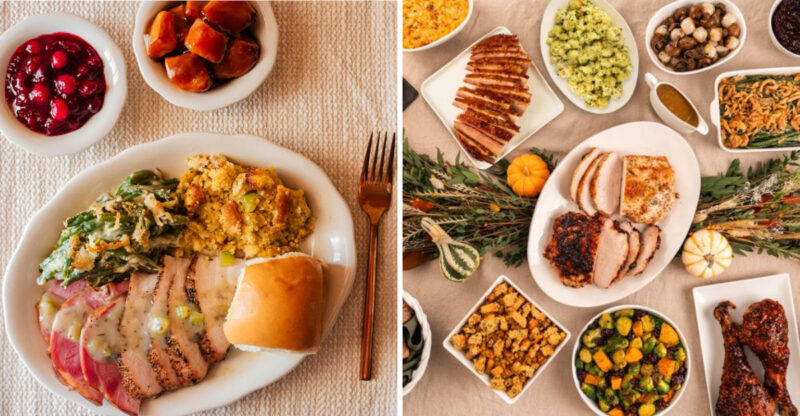10 Massachusetts Classics Pork Tenderloin Done Old-School

Massachusetts has a rich cooking history that goes way back to colonial times. When folks prepared pork tenderloin in the old days, they used simple ingredients and time-tested methods that created unforgettable flavors.
I’m excited to share these traditional recipes that have been passed down through generations and still taste amazing today.
1. Apple Cider Braised Tenderloin
Fresh apple cider transforms ordinary pork into something magical when you braise it low and slow. My grandmother used to make this every fall when the orchards were bursting with crisp apples.
The natural sweetness balances perfectly with savory herbs like thyme and rosemary. You’ll need about two cups of cider, some butter, and patience while it simmers for an hour.
This method keeps the meat incredibly tender and juicy every single time.
2. Maple Mustard Glazed Roast
Picture this: sticky-sweet maple syrup meeting tangy mustard in a glaze that caramelizes beautifully in the oven. Colonial cooks discovered this combination centuries ago, and it remains unbeatable.
I brush the mixture on every fifteen minutes while roasting at 375 degrees. The result is a shiny, flavorful crust that makes everyone ask for seconds.
Serve it with roasted root vegetables for an authentic Massachusetts meal.
3. Cranberry Stuffed Tenderloin
Cranberries grow wild in Massachusetts bogs, so naturally they found their way into traditional pork dishes. Butterflying the tenderloin and filling it with tart cranberries creates a stunning presentation.
Mix dried cranberries with breadcrumbs, onions, and celery for the stuffing. Tie everything up with kitchen twine before roasting until golden brown.
Each slice reveals a beautiful spiral of ruby-red fruit that tastes as good as it looks.
4. Salt Pork Crusted Tenderloin
Old-time cooks wrapped their best cuts in thin slices of salt pork to keep them moist during cooking. This technique dates back to when refrigeration didn’t exist and preservation was essential.
The salty outer layer bastes the tenderloin as it roasts, creating incredible flavor. You simply arrange the strips over the meat and secure them with toothpicks.
When finished, the crust turns crispy while the inside stays succulent and tender.
5. Herb Garden Roasted Tenderloin
Every colonial garden grew parsley, sage, rosemary, and thyme for cooking and medicine. Coating tenderloin with these fresh herbs creates an aromatic crust that smells heavenly while baking.
Chop the herbs finely and mix them with olive oil, garlic, and black pepper. Press this mixture firmly onto all sides of the meat before roasting.
The herbs form a flavorful coating that seals in all the natural juices beautifully.
6. Brown Sugar and Clove Roast
Spice traders brought cloves to Massachusetts ports centuries ago, making them a prized ingredient in special recipes. Combining them with brown sugar creates a sweet-spicy crust that’s absolutely addictive.
Pat the sugar mixture onto the meat and let it sit for thirty minutes before cooking. The cloves add warmth and depth while the sugar caramelizes into a sticky glaze.
This preparation was reserved for Sunday dinners and holiday celebrations back in the day.
7. Buttermilk Marinated Tenderloin
Buttermilk wasn’t just for pancakes in old Massachusetts kitchens. Soaking pork in this tangy liquid overnight breaks down tough fibers and adds subtle flavor that you can’t get any other way.
Add garlic, pepper, and fresh dill to the marinade for extra taste. After marinating, pat the meat dry and roast it simply with salt and pepper.
You’ll be amazed at how tender and moist the finished dish turns out.
8. Molasses and Onion Braised Pork
Molasses arrived in Boston Harbor by the barrel during colonial times, becoming a staple sweetener in local cooking. Braising pork with molasses and onions creates deep, rich flavors that taste like history itself.
Brown the meat first, then add sliced onions and a generous pour of molasses with some broth. Cover and simmer gently until everything becomes meltingly tender.
The sauce thickens into something truly special that demands crusty bread for soaking.
9. Cider Vinegar and Black Pepper Roast
Massachusetts farmers always kept apple cider vinegar in their pantries for preserving and cooking. This old-time recipe uses vinegar as a tenderizing marinade that adds a pleasant tang without overwhelming the pork. Cracked black pepper forms a bold, spicy crust that contrasts perfectly with the mild meat.
The marinade is surprisingly simple: just vinegar, oil, garlic, and plenty of freshly ground pepper. Let the tenderloin soak for at least four hours, or even overnight if you have time. When you roast it at high heat, the outside gets wonderfully crispy.
Slice it thin and watch how the pepper creates beautiful dark rings around each piece.
10. Sage and Butter Basted Tenderloin
Fresh sage grew in nearly every Massachusetts kitchen garden during the 1800s. Cooks valued this aromatic herb for its ability to complement rich meats like pork and poultry. Basting tenderloin repeatedly with sage-infused butter keeps the lean meat incredibly moist while building layers of flavor.
You melt butter with whole sage leaves, letting them sizzle gently to release their earthy oils. Every ten minutes during roasting, spoon this fragrant mixture over the meat. The butter browns slightly, creating a gorgeous golden coating.
When finished, the tenderloin practically glistens on your serving platter. Each bite delivers that classic herb taste our ancestors loved so much.






